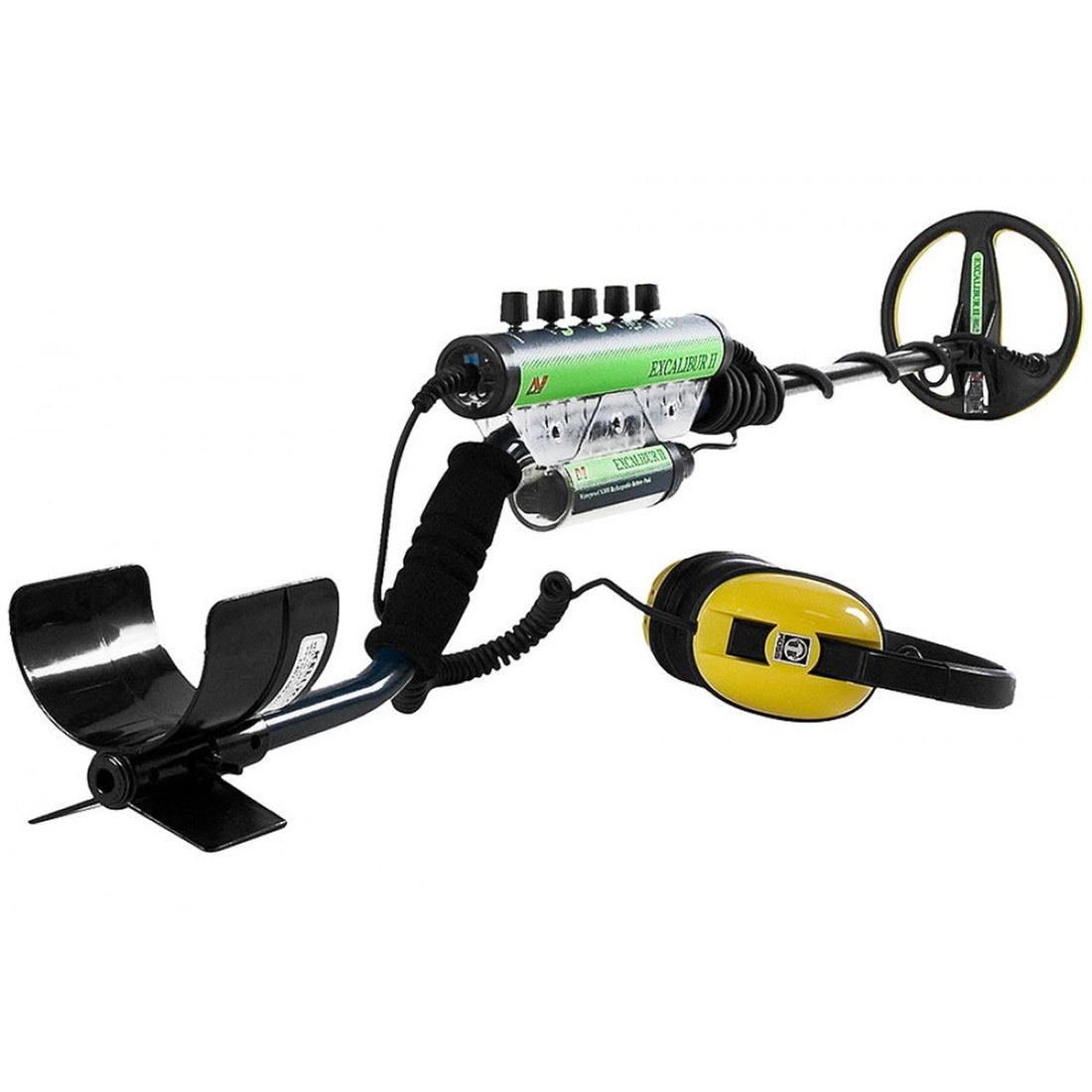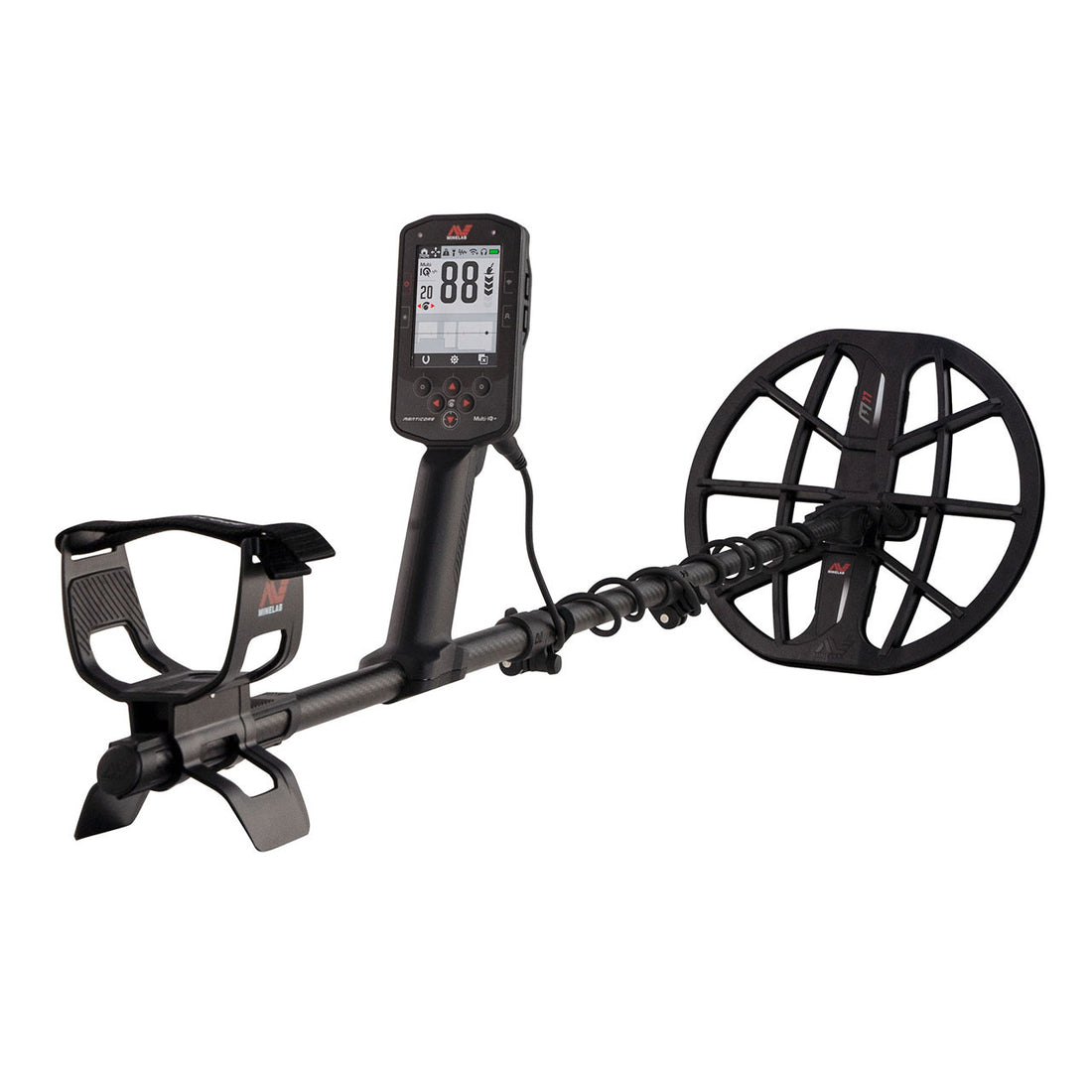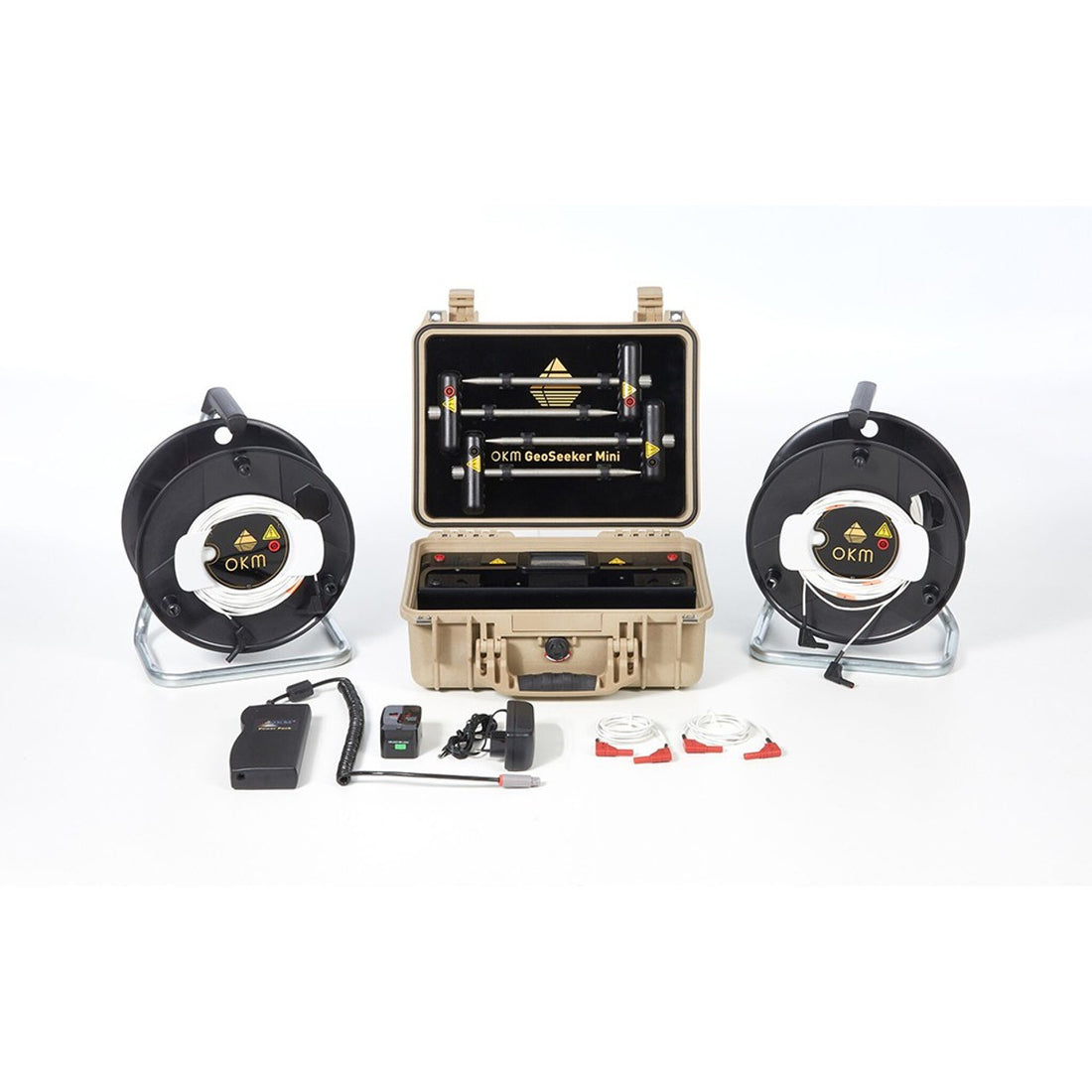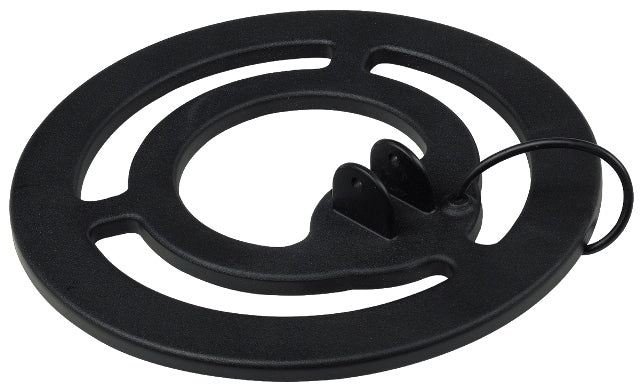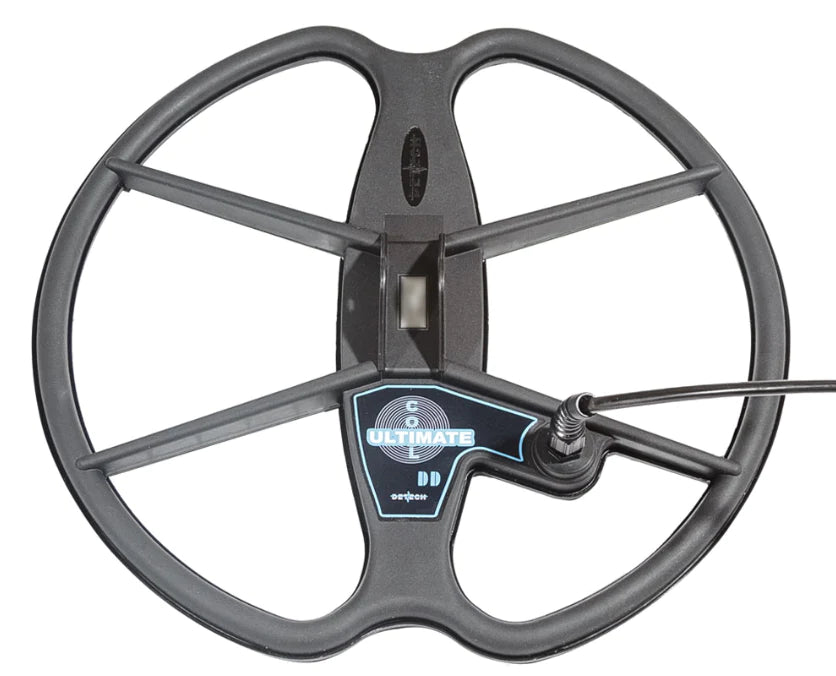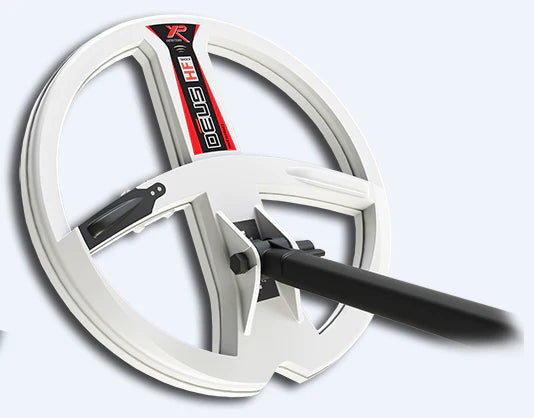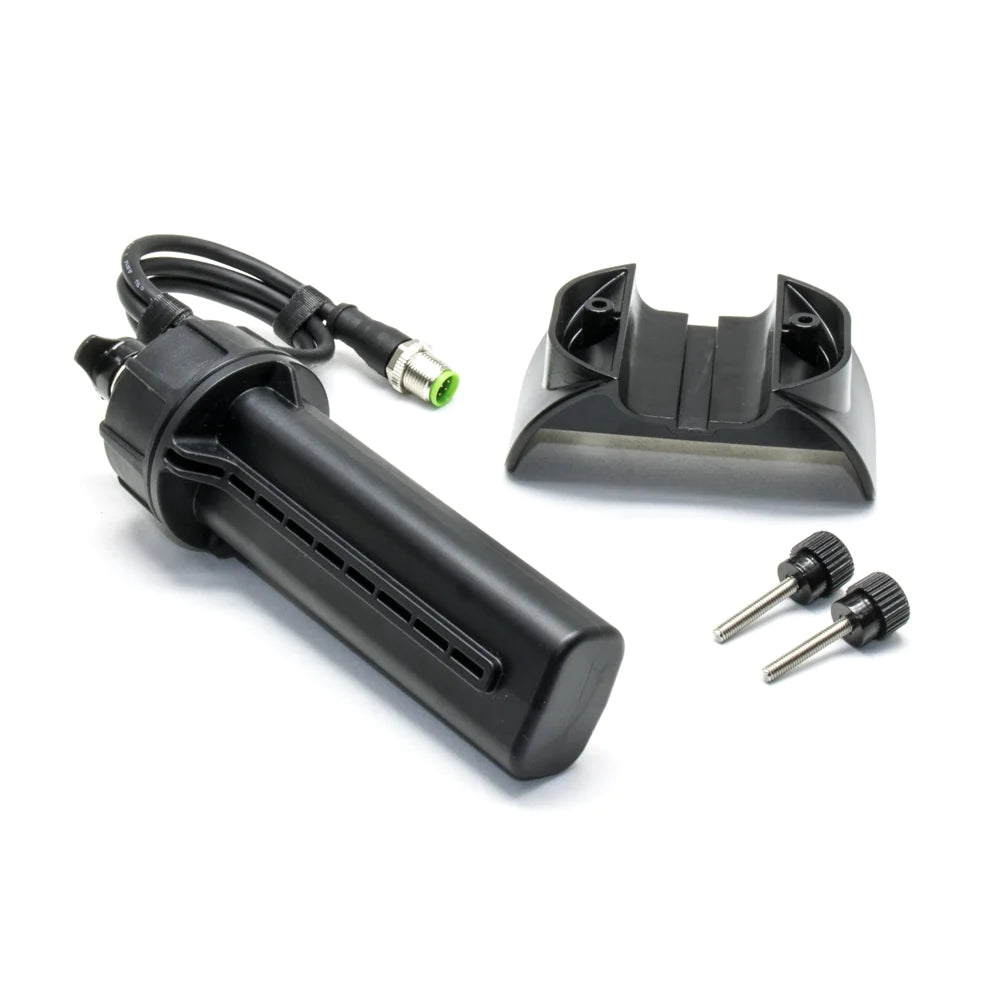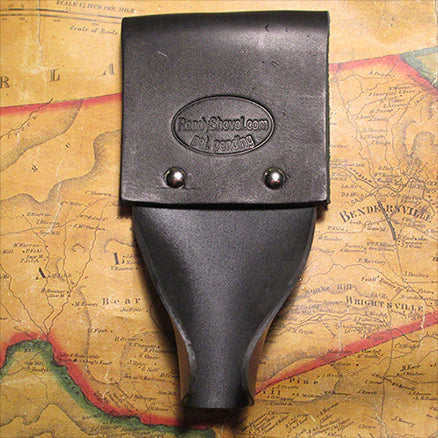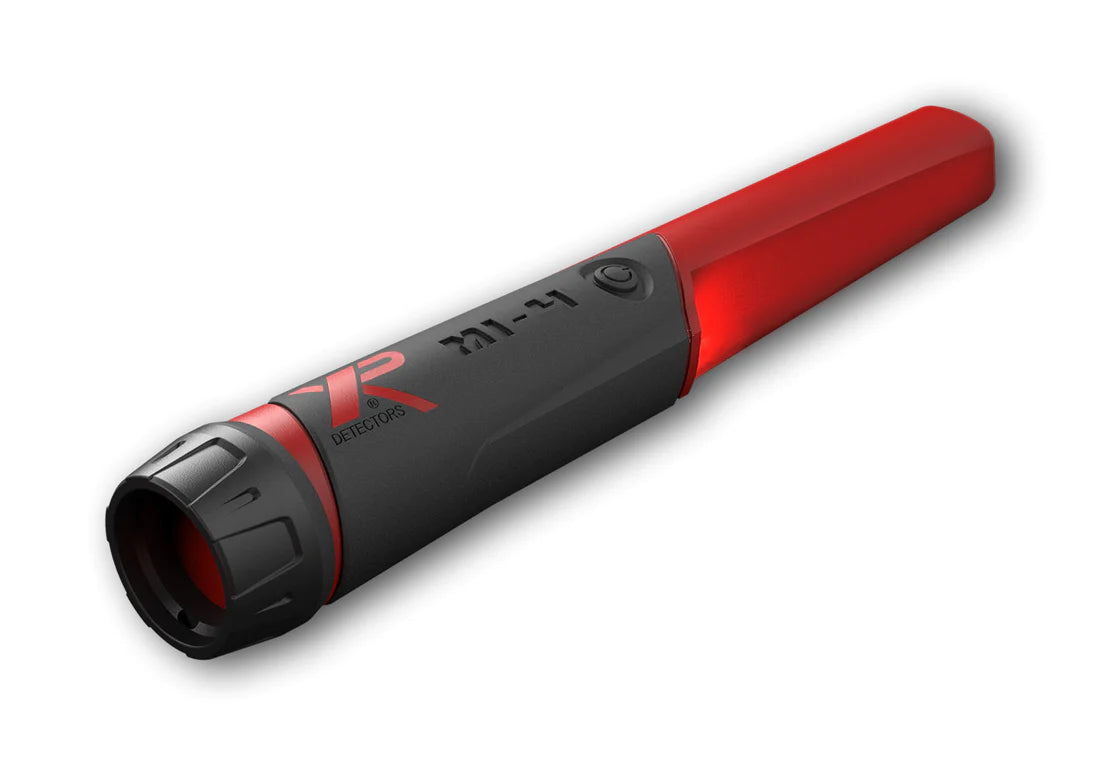What are the Best Industrial Metal Detectors?
What are the Best Industrial Metal Detectors?
by Daniel Bernzweig
So you are working at your latest job site and realize that you have hit a roadblock. Something is buried below the earth, and you need to locate it before you can move forward with your job. Industrial metal detection systems can save you time and money in the field. In this article, we will discuss the process for selecting the best industrial metal detector for your job. We will also cover the typical applications for the most common detection systems. We will provide an overview of the most common equipment, including Cable Locators, Pipe and Leak Locators, Valve Box & Ferro Magnetometers, and Water Level Indicators. Like any tool, picking the right one for the job will help you quickly get one project finished so that you can move on to the next.
Let's start by reviewing what to look for in a cable locating device. Cable locating detectors come in single frequency and multiple frequency configurations. They are designed to trace all conductive lines, including pipes, cables, and conductive electrical lines. Some units include advanced features like digital displays. In general, they are all-metal devices. You will want to be sure to get quality headphones such as the Whites Prostar Headphone or the Audio Headphone to go along with your device.
This will allow you to hear the deeper fainter signals clearly and easily and also block external noise.
Cable Locating Metal Detectors:
- Fisher Industrial TW-82 Digital Line Tracer Detector
- Fisher TW-6 2-box Metal Detector
- Fisher Industrial TW-82 Digital Line Tracer
- Goldak 902 Pipe & Cable Locator with Subscanner
- Goldak Triad 2310 ULS Pipe and Cable Locator
- Goldak 600 Power Cable Locator with Headphone
The next type of industrial metal detector is designed to locate valve boxes, manhole covers, oil tanks, and general pipe locations. The Fisher FML-3 and FX-3 are magnetometers and, as such, will locate iron or steel only. They are extremely sensitive and deep-seeking devices. If you are looking to locate other types of metal, the Fisher M-101 and the M-97 are all-metal metal detectors and are what you need. The drawback is that they do not go as deep as the magnetometers.
Valve, Box & Ferro Magnetometers:
- Fisher FML-3 Magnetic Locator Detector
- Schonstedt GA-52CX Magnetic Locator
- Fisher M-97 Industrial Metal Detector
- Goldak 7200 XP Valve Locator
- Copperhead ViperMag Complete Utility Locating System
- Leica ULTRA Utility Detection and Tracing System 12 Watt Advanced
- Schonstedt GA-92XTd Metered Magnetic Locator
The next group of detection devices is pipe detection and liquid leak locating instruments. They are designed to find leaks in pipes or the actual pipes. These devices feature special technologies for pinpointing leaks even in tough conditions. Some devices include digital displays and notch filters for suppressing external noise.
Pipe and Water Leak Locating Devices:
- Fisher Industrial XLT-17 Liquid leak detector
- Fisher XLT-30
- Goldak 777-A
- Goldak 777-B
- Goldak 4360 Pipe and Leak Detector Combo
The final category of detection equipment is water level indicating devices. These devices can be ordered in various lengths depending on your specific application. They will help you accurately measure the water level in water wells and other bodies of water. Contact with water is indicated by both an audio tone and LED.
Water Level Indicators:
In summary, there are various industrial metal detectors and detection systems for different applications. It is important to understand the differences between the detection systems to select the correct unit for your job. We hope that you now feel better equipped to pick out the best detector for your next job. Keep in mind that no two jobs are the same, and it is important to get expert advice when selecting your equipment. Our experienced product specialists are here to help you select the best equipment for your application.
60 Cycle Passive Locators
- Fisher Industrial TW-82P Digital Line Tracer with Passive Power
- Goldak 600 Power Cable Locator with Headphone
EMS Marker Locators
Sonde and Camera Head Sewer Locators
- Schonstedt XT-512 Camera and Sonde Locator
- Goldak TRIAD 2310-SC Camera and Sonde Locator
- Schonstedt Rex Multi-Frequency Pipe & Cable Locator
- Goldak CI-5120 Camera and Sonde Locator
Plastic Water Pipe Locators
- Schonstedt RD500 Plastic Water Pipe Locator Electronic Kit
- Schonstedt RD500 Pro Plastic Water Pipe Locator Kit
- Schonstedt RD500 Plastic Water Pipe Locator Mechanical Kit
Ground Penetrating Radar
- Leica DS2000-4 Four Wheel Utility Detection Radar
- Leica DSX Utility Detection Starter Kit with DXplore Perpetual License
- Leica DS2000-4 Four Wheel Utility Detection Radar Starter Kit
Pipe Inspection & Locators
- General Pipe Cleaners Gen-Eye Hot Spot Pipe Locator
- General Pipe Cleaners Hot Spot Pipe Locator with 5 Watt Transmitter Combination
- General Pipe Cleaners 5 Watt Gen-Eye Hot Spot Transmitter + Cables + Ground Stake
- General Pipe Cleaners Gen-Eye Micro-Scope 2 Color Video Pipe Inspection System with 100 Foot Micro Push Rod and Color Camera
Food Grade Metal Detectors
Food Grade Metal Detectors are used to detect metal contaminants in the food and pharmaceutical industries. They are designed to be highly sensitive, accurate, and reliable. The most common types of Food Grade Metal Detectors include magnetic induction, eddy current, and optical sensor-based scanners for x-ray inspection. These food metal detectors can be installed to detect metal objects on:
- Food production or inspection lines
- Conveyor belts with or without vibratory feeders
- Food processing lines, or
- As standalone units for specific packaging applications.
- In line with magnetic separation
This metal detection technology will search for metal contaminants like ferrous metal or stainless steel in bulk material, metal contamination or foreign material in food products, or foreign bodies or contaminants in pharmaceuticals. The raw material inputs will impact the scanning rate. Remember that your production capacity will be directly impacted by your choice of technology and the pass-through rate at which items can be inspected. It can also be used to prevent product recalls, ensure consumer and food safety in markets and grocery stores, and protect brands from reputational damage. This specific metal detection equipment can also be used to find tramp metal that has accidentally made its way onto conveyor metal detector systems during the mining process. In some cases, a custom conveyor belt is added to the process.
The working principle of a Food Grade Metal Detector is based on the conductivity or magnetic properties of metal parts. When metal comes into contact with the sensor, it creates a disturbance in the electromagnetic field detected by the machine. The signal is then processed and displayed on the control panel, indicating the presence of metal. The sensitivity of a Food Metal Detector or Pharmaceutical metal detector is adjustable depending on the application. It can be set to detect even the smallest pieces of a metal contaminant. High-sensitivity models are common in the industrial metal detectors market as it is particularly important to prevent metal contamination in food products and pharmaceuticals.
Any quality control process must include contaminant detection. Metal detectors can be disrupted by a factor called the product effect when inspecting physical products. A product is said to have the product effect when it conducts electricity and generates its own magnetic field. Metal detectors can be disrupted by various factors, which must be identified.
There are three main types of Food Grade Metal Detectors:
- Magnetic induction detectors use a magnetic field to detect metal contaminants. They are often used in food processing plants because they can detect very small metal particles (even down to 2 mm). Some of these systems use pulse induction metal detector technology.
- Eddy current detectors use a coil and electromagnetic field to detect metal contaminants. They are often used in the pharmaceutical industry because they can detect very small metal particles (even down to 0.1 mm).
- Optical sensor-based scanners use x-rays for x ray inspection to detect metal contaminants. They are often used in the textile industry because they can detect very small metal particles in industrial products (even down to 0.1 mm).
In North America, the most popular metal detection system used in the food industry is the Magnetic Induction or Eddy Current metal detector conveyors. In Europe, Asia, and South America, x-ray inspection systems are also used. Several food-grade and or pharmaceutical industry metal detector brands include:
- Fortress Technology
- CEIA Metal Detectors
- Goring Kerr
- Thermo Fisher Scientific
Whether you are working in the food industry or pharmaceutical industry, having access to a Food Grade Metal Detector is essential for ensuring consumer safety and protecting your brand from harmful metal contaminants. These advanced metal detection systems utilize high-tech sensors and other cutting-edge technologies to detect even the smallest pieces of metal in your products. So, if you are looking for a reliable and accurate way to detect metal contaminants, a Food Grade Metal Detector is the perfect solution.
Metal Separation
Recycling and plastics industries commonly use metal separators for gravity-free fall metal separation. All ferrous metals and nonferrous metals, including stainless steel, are automatically detected by gravity-fed metal detectors. As soon as metal contamination is identified, a metal detector works in conjunction with a metal separator to reject the contaminated material. This will remove it from the finished goods production stream.
© 2011 Detector Electronics Corp. - Revised September 2022

